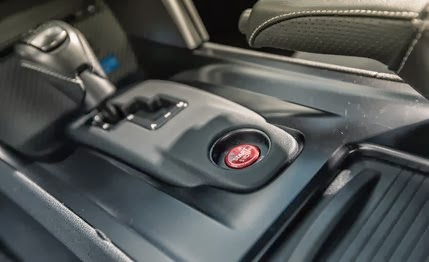Thank goodness Japan has a wild side. Interspersed among boatloads of politically correct Toyota Priuses comes the occasional Lexus F hot rod. And over at Nissan, punctuating the truckloads of morbidly thrifted Versas is the random GT-R. The muscular Nissan has a legacy going back decades, but for the most part, this fast and furious coupe boldly goes its own way. Quirky, jerky, and perky, it has so much personality that J.D. Power wouldn’t know how to score it. It’s a riot of sensation and sound—some annoying and others cyborg cool. On one hand, it’s a bargain supercar for hard-core gearheads.On the other, for a coupe from a nonpremium brand, the GT-R is a bit spendy, as it costs twice as much as a Chevy Camaro ZL1.
New for 2014 is the Track Edition you see here. It deletes the standard GT-R’s Mini-Me rear seats in favor of a pair of quilted, fabric-covered package bins. Other elements include modified Bilsteins, stiffer springs (20 percent, says Nissan), six-spoke RAYS forged-aluminum wheels, grippy fabric-covered front seats, and front and rear brake-cooling air channels, as well as front and rear spoilers fashioned from carbon fiber. The Track Edition is less influenced by gravitational forces than is the “base” model, to the tune of 33 pounds. Otherwise, this version sports the same horsepower and torque, same gearing, same tires, and so on. So the big question is, does the Track Edition merit a tariff that’s a chunky $16,000 steeper than the “base” Premium model?
Actually, the single notable change in the 2014 GT-R’s numbers is its price: The base Premium model breaks the $100,000 barrier for the first time, and the Track Edition kicks the charge all the way to $116,710. Our test car was $285 more dear than that, thanks to its optional GT-R–logo floor mats.
Although the 0-to-60 acceleration of the Track Edition we tested did reclaim the upper reaches of the two-second realm, the only other measurable improvements over the last base 2013 GT-R we tested were in braking (145 versus 161 feet) and lateral grip (1.02 versus 0.97 g). But since the Track Edition uses the same ultra-sticky Dunlop SP Sport Maxx GTs as last year’s base GT-R, we can only conclude that a stickier track surface improved the stats—not the enhanced content of the car itself. The Track Edition’s brake-cooling ducts likely would be a boon during a longer test session, as last year’s GT-R did exhibit some fade.
But make no mistake, this is a brutally fast car. At 2.9 seconds to 60, the GT-R pulls a massive 1.1-second hole shot on the Camaro ZL1 and easily bests other, more-powerful rides to the 60 mark, including the Shelby GT500, C6 Corvette ZR1, SRT Viper, Lamborghini Aventador, Ferrari 599GTB, Lexus LFA, and Mercedes-Benz SLS AMG.
Even though the GT-R has “only” 545 horsepower, its combination of all-wheel drive, nearly 50/50 front-to-rear weight balance, six-speed dual-clutch transmission for lightning-quick shifts, limited-slip differential, tacky rubber, and launch control conspires to get this supercar off the dime and rocketing through the traps.
The GT-R’s rear-mounted dual-clutch gearbox is an acquired taste. Overall, the driveline has more fore-and-aft lash, bumps, and surges than you might be used to, especially when climbing, say, a steep driveway at low speed. And three-point turns involving changes of direction might take more throttle than anticipated to get under way.
If you prefer your super cars free of whirring, road hiss, tire sizzle, exhaust drone and rumble, and the clickety-clack of mechanical lash, gear rattle, and various whines, look elsewhere. The GT-R Track Edition dispenses with the frippery of exotic hides and haute couture for the nuts and bolts of furiosity.











No comments:
Post a Comment